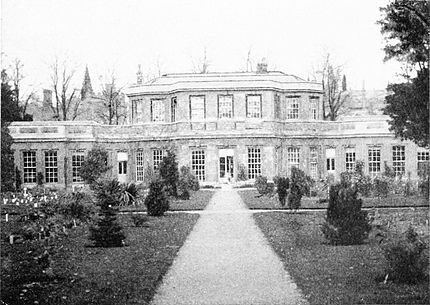the title of "lectura simplicium" by the professors of anatomy and surgery. It is interesting to note that the laboratory method of handling the course in "cognitio simplicium" was not introduced until the establishment of the botanic garden at the University of Padua, when, in addition to the lectures, exercises in the demonstration of remedial plants growing in the garden were given under the title of "ostencio simplicium."
The sixteenth and seventeenth centuries witnessed the foundation of many gardens in England, France, Germany, Holland, and Sweden, some of which have had a continuous existence to this day. The garden of Bologna was founded in 1568; Leyden, 1577; Leipsic, 1579; Montpellier, 1596; and Paris in 1597. The last

View of the Laboratory in the Oxford Botanic Garden. Alter a photograph.
named was organized for the purpose of determination of "what variations were possible in the style of bouquets worn at the royal courts." Then followed the establishment of the gardens at Giessen in 1605, Strasburg in 1620, Jena in 1629, Oxford in 1632, Upsala in 1667, and Chelsea in 1680.
The Oxford garden is the oldest in England, and a curious feature in its organization is that during its entire term of existence—two hundred and sixty-four years—it has occupied leased ground. It owes its existence to the munificence of the Earl of Danby, who, besides making such alterations in the surface as to secure it from overflow, erected the wall that still incloses it, at a cost of five thousand pounds. The portion of the garden
